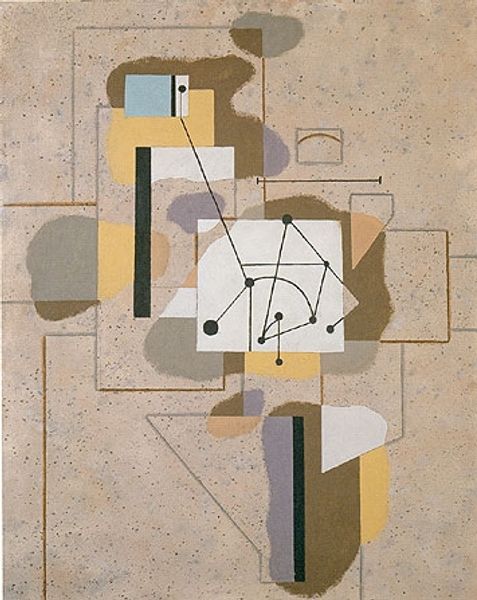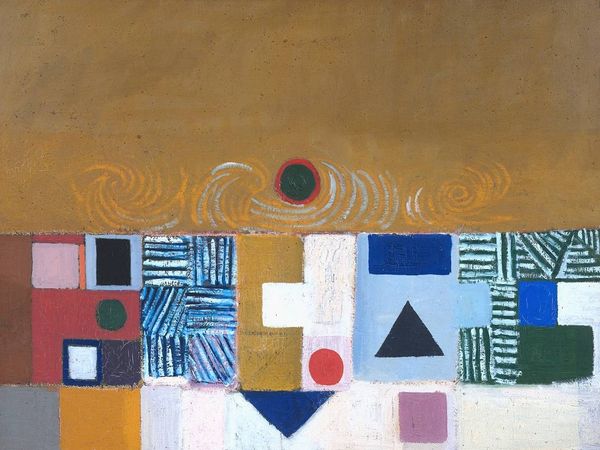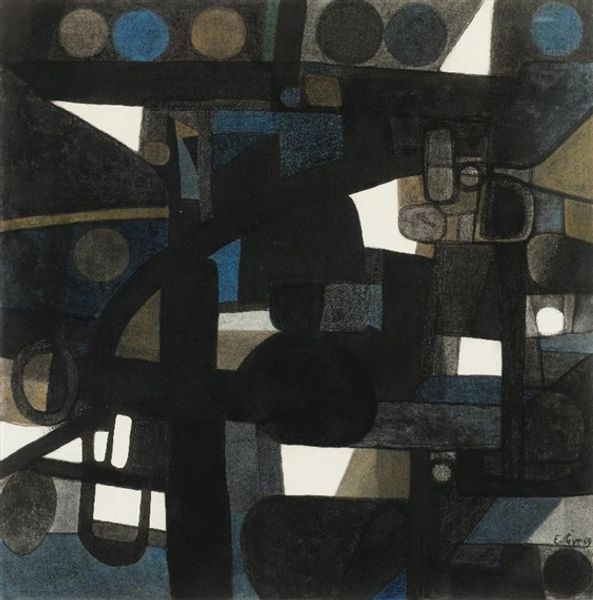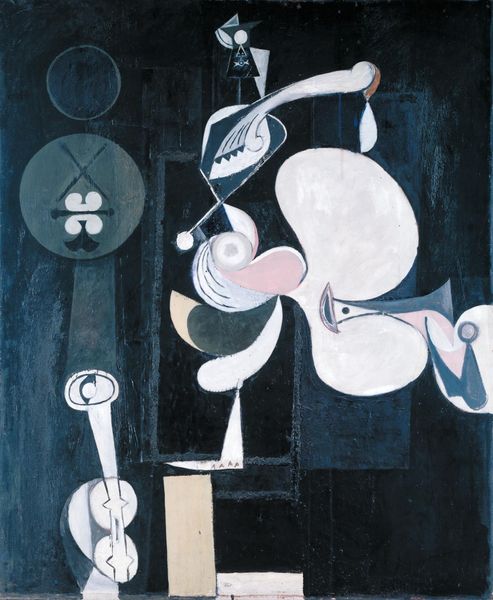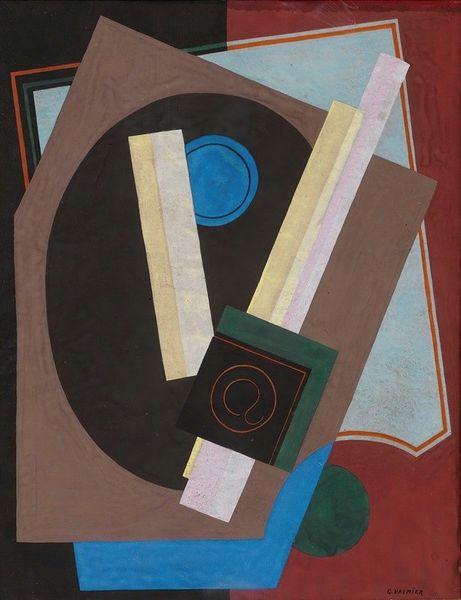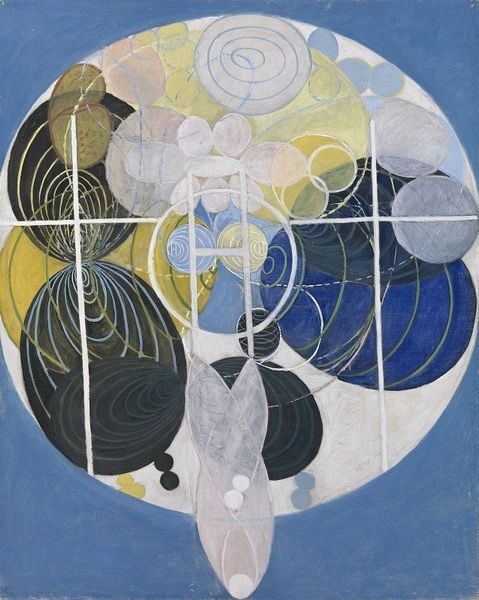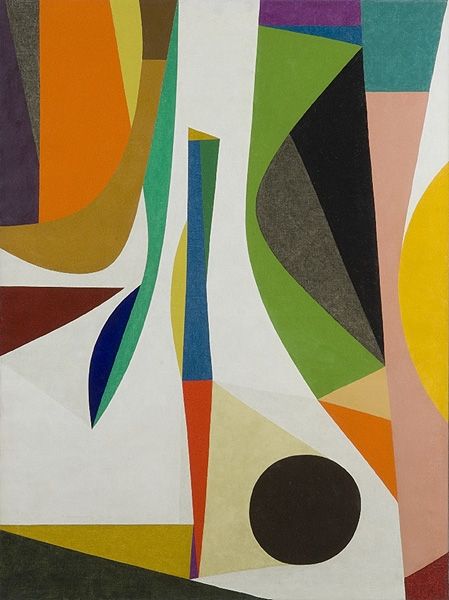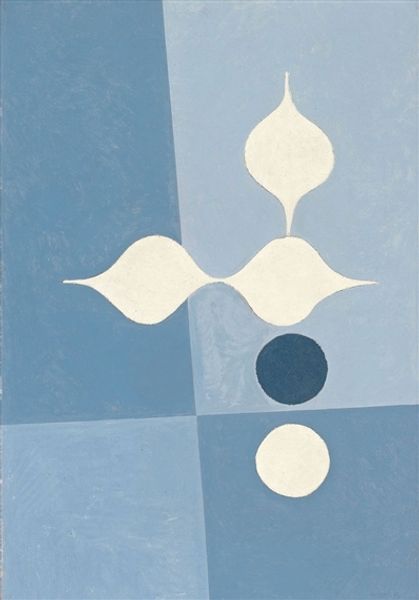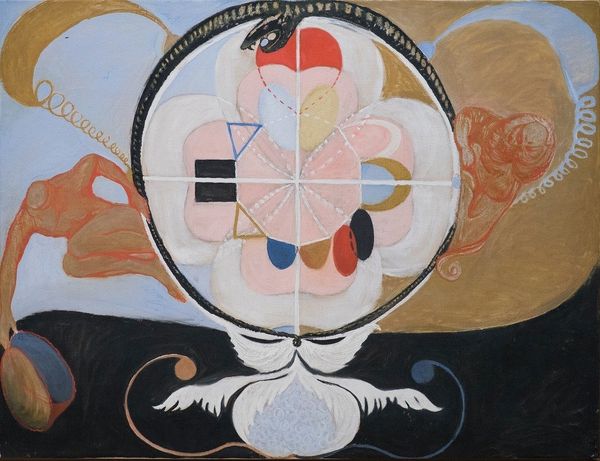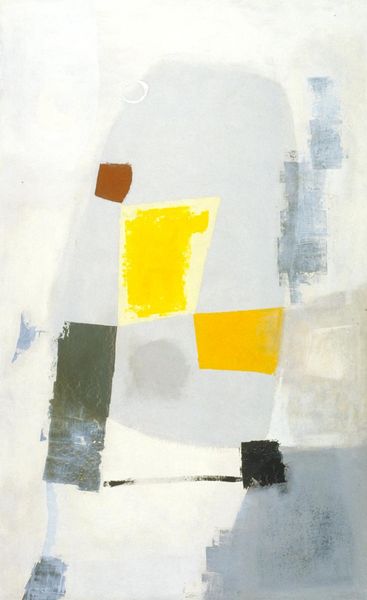
painting
#
cubism
#
painting
#
geometric
#
abstraction
#
modernism
Copyright: Public domain US
Curator: Good morning, let’s discuss Suzanne Duchamp’s 1921 painting, "Solitude entonnoir," or "Funnel of Solitude." Editor: Well, my initial response is…disquieting. The title prepares me for a sense of isolation, and the dark void at the center certainly delivers that. It almost feels like a vortex. Curator: The power of this vortex certainly comes from the contrast with its surroundings, doesn't it? Note how Duchamp structures the painting around oppositions: light versus dark, geometric precision versus textural variation in the application of pigment. Look, too, at how the lines all converge at the dark center, drawing the viewer's gaze into this void. Editor: I am immediately drawn to the fact that this painting was made by a woman within a largely male-dominated art world. During the Interwar Period, the discourse around art shifted substantially. The shadow of war hung over much of Europe. So I’m curious—how might Suzanne Duchamp’s perspective, both personal and as a woman, shape the piece? Was there some societal factor in play here that magnified that theme for her and perhaps even other female modernists? Curator: Interesting you say that. The theme of solitude isn’t uncommon in post-war art, a moment marked by immense disruption and alienation, but what separates Suzanne Duchamp’s work here is the calculated way the geometric forms give the theme life. Take note of the series of colored triangles below the “funnel”, an element whose pattern adds to the sense of regulated yet unstable shapes. Editor: I find myself wanting to understand the immediate response of people seeing it back then, considering where Duchamp fit socially in a post-war period. What message did everyday viewers extract? Curator: A brilliant point, as we will, in many ways, never see it as they saw it then. In our own time, "Solitude entonnoir" remains relevant for the unique lens it provides on the personal impact of rapid social and aesthetic change. It highlights how the language of modernism offered powerful means to explore individual experience. Editor: Ultimately, “Funnel of Solitude” seems to mirror the internal, private effects of a changing world as filtered through an artistic—and distinctly female—sensibility.
Comments
No comments
Be the first to comment and join the conversation on the ultimate creative platform.

